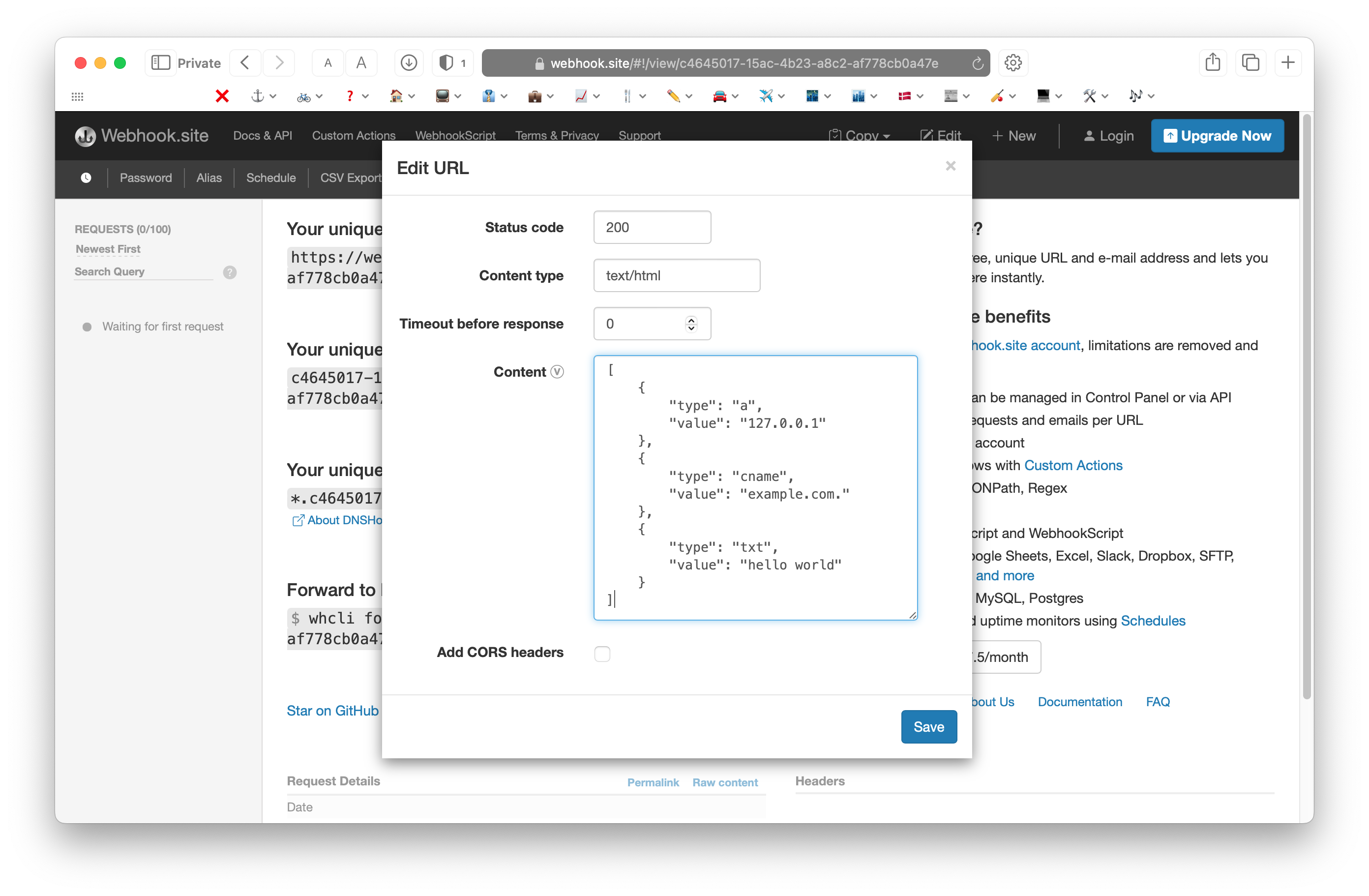DNSHook by Webhook.site¶
What is DNSHook?¶
Webhook.site DNSHook is a type of hook, like webhooks and emailhooks, that on Webhook.site will automatically show all DNS requests to a unique DNS name and all its subdomains.
DNSHooks can be used to send data solely via DNS. DNSHooks can also be used as a canary token as DNS can be useful in cases where it can bypass firewalls, for example.
Create DNS workflows with Custom Actions¶
You can even create workflows from DNSHook requests with Custom Actions.
For example, you can send a notification to your phone whenever a specific subdomain has had its DNS looked up via the Ntfy action.
Receive data via DNS¶
As all subdomains are also logged and shown on Webhook.site, you can send data in DNSHooks by e.g. base64-encoding a subdomain. For example, the string hello world can be encoded in a DNS lookup as the following.
(In this case, aGVsbG8gd29ybGQ base64-decodes to hello world and 47bb8761-e40b-42c2-8c98-a448f492df70 is the ID of the Webhook.site token/URL.)
Indeed, you can even use different record types, like CNAME and MX, as flags to transfer information to Webhook.site.
Send DNS Response¶
You can also set the DNS response dynamically by using the URL response in the following format. You can return one or more responses.
[
{
"type": "a",
"value": "127.0.0.1"
},
{
"type": "cname",
"value": "example.com."
},
{
"type": "txt",
"value": "hello world"
}
]
To set the response, either enter the JSON in Edit → Content, or use the Modify Response Custom Action and setting the Response Body field.
type can be one of the following:
acnametxt
Note: If the response isn't valid (e.g. invalid JSON, using a domain name in an A record), no response is returned. It is currently not possible to be notified of DNS parsing errors, so make sure to test this well.
For txt responses, multiple lines can be sent by separating with \n (newline).

